This article was co-authored by Eric Christensen, DPT. Eric Christensen is a Physical Therapist based in Chandler, Arizona. With over a decade of experience, Eric works in both orthopedic and neurological fields and specializes in custom orthotic prescription and casting, vestibular reprogramming, and manual therapy. He holds a Bachelor’s degree in Exercise Science with a focus in Sports Medicine from Colorado State University and a Doctor of Physical Therapy from Regis University. In practice, Eric takes a developmental approach to rehabilitation utilizing the Selective Functional Movement Assessment. He uses functional movement patterning and manual therapy to return patients to prior levels of function.
There are 19 references cited in this article, which can be found at the bottom of the page.
This article has been viewed 131,469 times.
Lower back pain is pretty common among Americans, with about 80% of adults suffering from it at some point in their lives. The reason for this is because the lower back (called the lumbar spine) must support the upper body when you run, walk and sit — the compression negatively affects joints, intervertebral discs, ligaments and nerves. Low back pain can range from mild to severe, but usually only lasts from a few days to a few weeks. You can manage most episodes of low back pain at home, although sometimes a health professional is needed for more serious causes.
Steps
Dealing with Lower Back Pain at Home
-
1Rest and be patient. The spine is a complex and congested collection of joints, nerves, muscles and blood vessels.[1] Thus, there are many structures that can create pain if you move the wrong way, experience trauma or over-stress the area. However, lower back pain (even when severe) can fade away quickly without treatment — often within a few days. This is because the body has a powerful ability to heal and most back pain is due to being a little "out of whack" instead of damaged. Be patient if you feel lower back pain, stop any aggravating activities and see if it fades away on its own.
- Complete bed rest is no longer recommended for most types of lower back pain. The medical consensus is that at least some light exercise (walking, stair climbing) is helpful for lumbar pain because it stimulates blood flow and can help "loosen" or "unjam" any irritated spinal joints or nerves.[2]
- If your lower back pain is caused from exercising at the gym, then maybe you're working out too hard or with bad form — ask a personal trainer for advice.[3]
- If your lower back pain is work related, speak to your boss about changing to lighter work duties or altering your work area — a cushioned mat for underneath your feet or a chair with lumbar support, for examples.
-
2Use cold therapy for acute low back pain. While you're resting your lower back and being patient for a few days, consider applying cold therapy. Applying ice or frozen gel packs to any acute (sudden or new) musculoskeletal injury is effective because it numbs the pain and reduces inflammation.[4] Crushed ice, ice cubes, cold gel packs or a bag of frozen veggies should be applied to the most painful area of your low back for between 10 – 15 minutes every hour, until the discomfort starts to fade away. Once improved, reduce the frequency to three times per day.
- Always wrap anything frozen in a thin cloth before applying it to your lower back in order to prevent frostbite or skin irritation.
- Compressing the cold therapy against your lower back with an elastic bandage or support can also help prevent inflammation from building up.
- Remember that cold therapy is usually not appropriate for chronic (long term) back pain because it can aggravate symptoms — moist heat often provides more relief.
Advertisement -
3Apply moist heat to chronic lower back pain. If your low back pain is chronic and has bothered you on and off for many months or years, then applying moist heat is likely better because it promotes blood flow and relaxes tight muscles and other soft tissues.[5] A good source of moist heat is microwavable herbal bags, especially the ones infused with relaxing aromatherapy, such as lavender. Put the bag in the microwave for a couple of minutes, then apply it to your lower back while sitting or lying down for about 20 minutes. Cover the bag with a towel to insulate it and prevent heat loss too quickly.
- As an alternative, soak your lower back in a warm Epsom salt bath for at least 20 minutes a few times a day until your symptoms fade away. Epsom salt contains magnesium, which relaxes muscles and reduces swelling.
- Don't make your bath water too hot so that it scalds you and remember to keep well hydrated — warm salt baths pull fluid from your skin and can dehydrate you.
- Applying moist heat or soaking in a warm salt bath is usually not recommended for acute back pain because it increases blood flow and tends to promote inflammation.
-
4Take over-the-counter (OTC) medications. OTC non-steroidal anti-inflammatories (NSAIDs) such as ibuprofen (Advil, Motrin), naproxen (Aleve) or aspirin can be effective short-term solutions for acute lower back pain because they reduce inflammation and pain.[6] On the other hand, chronic lower back pain may be better served by taking OTC painkillers, such as acetaminophen (Tylenol), because they alter the way your brain perceives pain.
- NSAIDs can be harmful to your stomach and kidneys if taken in large doses or for long periods of time (more than a few months), so be cautious and read labels carefully.
- Acetaminophen is not so hard on your stomach and kidneys, but it can damage your liver, so don't overdo it.
- Another way of relieving low back pain, but without the risk of stomach, kidney or liver irritation, is applying a cream or gel that contains NSAIDs, acetaminophen or natural analgesics such as menthol and capsaicin.
-
5Change your sleeping position. Your sleeping position and/or sleeping environment may be contributing to or causing your lower back pain. For example, sleeping on your stomach can cause too much of an arch in your low back, which compresses and irritates spinal joints and nerves.[7] The best sleeping positions for your lower back are the recumbent position (on your side similar to the fetal position with your hips and knees bent) and the supine position (on your back with your legs elevated by a pillow). Both of these positions take pressure off your lower back joints and reduces the chances of irritation / pain.
- Changing your sleeping environment usually means making sure what you sleep on is supportive for your spine. In general, beds that are too soft tend to promote back pain, whereas firmer orthopedic beds tend to reduce the incidence of lower back pain.
- Everyone's a little different, so a good way to judge your bed is if you're waking up sore or not. If you wake up sore, then your sleeping position/environment is an aggravating factor. If you're more sore at the end of the day, then it's likely your job/activities/exercising is to blame.
- Keep in mind that most foam and spring mattresses only last about 10 years with constant use, although it depends on your weight. Rotate and flip your mattress on a regular basis (every time you wash your sheets) to increase its longevity.
-
6Improve your posture.[8] Too much slouching while you sit and stand can increase the strain on your low back and lead to irritation or pain.[9] Improving your posture can help reduce back strain and relieve existing back aches. In fact, improving your posture can also help prevent recurrence of lower back pain. However, improving your posture is a difficult task that requires daily effort and dedication.
- Strengthening your core muscles is a good strategy to help improve your posture. Core muscles are those in your low back, lower abdomen and pelvis — they all connect to your spine and/or pelvis in some way to help hold your body upright.[10]
- To maintain good posture while standing: stand with your weight distributed over both feet and avoid locking your knees. Tighten your stomach and buttock muscles to keep your back straight. Wear supportive shoes and alleviate muscle fatigue by periodically resting one foot on a footstool.
- To maintain good posture while sitting: choose a firm chair, preferably one with armrests. Keep your upper back straight, but your shoulders relaxed. A small cushion placed behind your lower back can help maintain the natural curve of your lower back. Keep your feet flat on the floor, using a footstool if necessary.[11]
- It can be helpful to set an alarm on your phone or use an app to remind you throughout the day to check and correct your posture.[12]
-
7Make sure you are using safe lifting techniques. Though there is some disagreement about the best way to lift, as it varies depending on the circumstances, but there are a few basic rules you should try to follow.
- Test the weight of the load so you are not surprised by and unexpectedly heavy or shifting load. If the load is too heavy, ask for help.
- Stand as close to the load as possible before lifting, and keep it as close to your body as you can when you are carrying.
- Do not twist, stretch, or turn at the waist — if you need to turn, do so with your entire body.
- Appropriate lifting posture may include a squat lift (bending at the knees and hips while keeping your back straight), a stoop lift (keeping your legs straight while bending your back), or a freestyle lift (a semi-squat that allows you to rest the load on your thighs).
Getting Alternative Back Treatments
-
1Make an appointment with a chiropractor. Chiropractors are doctors who specialize in the spine and other joints. They are trained to treat back problems in natural ways, such as with manual spinal manipulation. Manual manipulation, also called a spinal adjustment, is used to unjam or reposition spinal joints that are slightly misaligned, which triggers inflammation and sharp pain.
- A single spinal adjustment can sometimes significantly relieve your lower back pain, but usually it takes three to five treatments to really feel much better. Keep in mind that your health insurance may not cover chiropractic care.
- Chiropractors also use therapies meant more for muscle strains and ligament sprains, which may be more appropriate for your lower back issue. Electronic muscle stimulation, therapeutic ultrasound and TENS treatments are examples of such therapies.
- Tractioning or stretching your spine with an inversion table can also help lower back pain. Some chiropractors use inversion tables, which allows you to recline your upper body and enlist the help of gravity to decompress your spine.
-
2Get a lower back massage. As noted above, not all lower back injuries are joint related. Many are related to muscle pulls or strains. A pulled muscle happens when the small muscle fibers tear, which causes pain, inflammation and muscle guarding or spasms. Thus, a deep tissue massage can be great for mild-to-moderate strains because it calms muscle spasms, reduces inflammation and promotes relaxation.[13] Start with a 30 minute massage from a licensed massage therapist, focusing on your lower lumbar spine and pelvis.
- A single 30-minute massage session may be enough to soothe your lower back pain, but it often takes a few more sessions to see significant results. For chronic back pain, consider increasing your sessions to an hour and include some mid back and/or leg work also.
- Drink lots of purified water after any massage in order to flush out inflammatory by-products from your body. Failure to do so might lead to muscle soreness, a headache or some mild nausea.
- As an alternative to a professional massage, place a tennis ball underneath your low back and roll on it slowly for 15 minutes a few times daily until the pain fades away.
-
3Try some acupuncture therapy. Acupuncture is an ancient Chinese healing art that involves sticking thin needles into specific points within your skin in efforts to reduce pain and inflammation.[14] Acupuncture for lower back pain can be very helpful, especially if it's done when your symptoms are acute (fairly new). Acupuncture apparently works by triggering the release of many substances, including endorphins and serotonin, which act to eliminate the sensation of pain.
- There is some research evidence that acupuncture really helps chronic lower back pain, but your results may vary.
- Acupuncture points that provide back pain relief are not all located close to where you feel the pain — some are in distant areas, such as your hand.
- Acupuncture is now practiced by many health professionals — whoever you choose should be certified by the National Certification Commission for Acupuncture and Oriental Medicine.
-
4Consider cognitive-behavioral therapy. Cognitive-behavioral therapy (CBT) attempts to identify your negative thoughts and beliefs, and then replaces them with more positive ones. More specifically, a CBT approach to treating back pain would focus on how you respond to or perceive your pain symptoms.[15] CBT has shown to help reduce stress and chronic back pain in many people.[16] [17]
- CBT can be a "last resort" treatment choice for low back pain when nothing else seems to be helpful.
- Consult your family physician, psychologist or insurance company representative for the names of CBT practitioners in your area. Consider interviewing a couple of them before you decide on which one to proceed with.[18]
Getting Medical Treatments for Your Back
-
1Make an appointment with your doctor. If patience, basic home care and alternative therapies are not real helpful in alleviating your lower back pain, then make an appointment with your doctor. They will examine you to see if your pain is caused by a serious spinal issue: herniated spinal disc, entrapped (pinched) nerve, bone infection (osteomyelitis), osteoporosis, stress fracture, advanced arthritis or cancer.[19] For pain control, your doctor can prescribe stronger NSAIDs or painkillers.
- X-rays, bone scans, MRI, CT scans and nerve conductance studies are all methods of viewing and diagnosing spinal problems.
- You may also be sent for a blood test in order to see if you have rheumatoid arthritis or a spinal infection (osteomyelitis or meningitis).
- You may ultimately be referred to a medical specialist (orthopedist, neurologist, rheumatologist) to better figure out your lower back problem.
-
2Get a physical therapy referral. If your lower back pain is chronic (bothering you for many months or years) and related to weak muscles, bad posture and/or degenerative conditions ("wear and tear" osteoarthritis), you should consider spinal rehabilitation therapy — you'll likely need a referral from your doctor. A physiotherapist can teach you specific stretches and strengthening exercises for your lower lumbar spine, which can relieve pain with time.[20] Physical therapy is usually recommended 3x per week for 4-8 weeks to make a significant impact on chronic lower back issues.[21]
- For spinal rehabilitation, physiotherapists tend to use a variety of exercise balls, weighted medicine balls, elastic tension bands, electronic muscle stimulation and/or therapeutic ultrasound devices.
- Effective strengthening exercises that you can do on your own for your lower back muscles include: swimming, rowing, certain yoga positions and back extensions.
-
3Try myofascial trigger point therapy. Your back pain may be related to muscle injury or strain at a trigger point, which can lead to referred pain, or pain that extends to another area. So, though you may be experiencing pain in your lower back, the trigger point may be located elsewhere on your body.
- Locate a practitioner who is trained to identify and treat myofascial pain. He may use a variety of techniques to release the trigger point.
-
4Consider a steroid injection for your pain. If stronger prescription drugs and/or back rehabilitation don't prove effective, then an injection of corticosteroid medicine into the joints, muscles, tendons or ligaments of your low can quickly reduce inflammation and pain, and allow better movement.[22] Corticosteroids are based on natural human hormones, which have strong and quick-acting anti-inflammatory properties. The most common ones used by doctors are called prednisolone, dexamethasone and triamcinolone. Your family doctor will likely refer you to a back specialist (orthopedist) for the injection if she thinks it will help.
- Potential side effects of getting steroid injections include: local infection, excessive bleeding, tendon weakening, muscle atrophy, nerve irritation / damage, and reduced immune system function.
- Pain relief from steroid injections can last anywhere from a few weeks to many months. Doctors don't like to give more than two injections per year.
- If corticosteroid injections don't give much relief for your lower back pain, then an operation (there's many different surgical procedures) should be explored with your doctor as a last resort.
Expert Q&A
Did you know you can get expert answers for this article?
Unlock expert answers by supporting wikiHow
-
QuestionWhat can I do to relieve my lower back pain?
 Jarod Carter, DPT, CMTJarod Carter is a Physical Therapist, Consultant, and the Owner of Carter Physiotherapy, a manual physical therapy clinic in Austin, Texas focused on manual therapy as well as telehealth services to resolve pain and injuries. Dr. Carter has over 15 years of professional physical therapy experience. He received a DPT (Doctor of Physical Therapy) and an MTC (Manual Therapy Certification) from the University of St. Augustine for Health Sciences. Dr. Carter also holds a BS in Kinesiology from the University of Texas at Austin.
Jarod Carter, DPT, CMTJarod Carter is a Physical Therapist, Consultant, and the Owner of Carter Physiotherapy, a manual physical therapy clinic in Austin, Texas focused on manual therapy as well as telehealth services to resolve pain and injuries. Dr. Carter has over 15 years of professional physical therapy experience. He received a DPT (Doctor of Physical Therapy) and an MTC (Manual Therapy Certification) from the University of St. Augustine for Health Sciences. Dr. Carter also holds a BS in Kinesiology from the University of Texas at Austin.
Physical Therapist
Warnings
- See your family doctor right away if you experience:
- Pain extending from your back down the leg
- Pain that gets worse when you bend over or bend your legs
- Pain that gets worse at night
- Unexplained fever and sudden weight loss with back pain
- Back pain with sudden loss of bladder or bowel control
- Back pain with numbness or weakness in the legs
⧼thumbs_response⧽
References
- ↑ http://umm.edu/programs/spine/health/guides/anatomy-and-function
- ↑ Jarod Carter, DPT, CMT. Physical Therapist. Expert Interview. 11 June 2020.
- ↑ Eric Christensen, DPT. Physical Therapist. Expert Interview. 17 March 2021.
- ↑ https://www.spine-health.com/blog/should-i-use-ice-or-heat-my-lower-back-pain
- ↑ https://www.spine-health.com/blog/should-i-use-ice-or-heat-my-lower-back-pain
- ↑ http://www.mayoclinic.org/diseases-conditions/back-pain/basics/treatment/con-20020797
- ↑ http://www.nhs.uk/Conditions/Back-pain/Pages/Treatment.aspx
- ↑ Eric Christensen, DPT. Physical Therapist. Expert Interview. 17 March 2021.
- ↑ Jarod Carter, DPT, CMT. Physical Therapist. Expert Interview. 11 June 2020.
- ↑ http://www.mayoclinic.org/healthy-lifestyle/fitness/in-depth/core-exercises/art-20044751
- ↑ http://www.orthop.washington.edu/?q=patient-care/articles/arthritis/back-pain.html
- ↑ Jarod Carter, DPT, CMT. Physical Therapist. Expert Interview. 11 June 2020.
- ↑ https://www.health.harvard.edu/pain/sore-back-try-a-massage
- ↑ http://www.mayoclinic.org/tests-procedures/acupuncture/basics/definition/prc-20020778
- ↑ http://www.nlm.nih.gov/medlineplus/ency/patientinstructions/000415.htm
- ↑ https://www.apa.org/pubs/journals/releases/amp-a0035747.pdf
- ↑ https://nccih.nih.gov/health/providers/digest/chronic-low-back-pain
- ↑ http://www.nlm.nih.gov/medlineplus/ency/patientinstructions/000415.htm
- ↑ http://www.mayoclinic.org/diseases-conditions/back-pain/basics/causes/con-20020797
- ↑ http://www.spine-health.com/treatment/physical-therapy/physical-therapy-benefits-back-pain
- ↑ Jarod Carter, DPT, CMT. Physical Therapist. Expert Interview. 11 June 2020.
- ↑ https://www.health.harvard.edu/pain/back-pain-what-you-can-expect-from-steroid-injections
- ↑ https://www.health.harvard.edu/blog/psychology-low-back-pain-201604259537
- ↑ http://www.niams.nih.gov/health_info/back_pain/back_pain_ff.asp
- ↑ Eric Christensen, DPT. Physical Therapist. Expert Interview. 17 March 2021.
About This Article
To treat lower back pain, place cold packs, like gel packs or frozen veggies, on your lower back for 10 minutes every hour. You can also use heat to treat lower back pain, like a warm bath with Epsom salts or an herbal bag. Just heat the herbal bag in the microwave and apply it to your lower back for 20 minutes. If home treatments aren’t helping, you can try alternative treatments like acupuncture and lower back massages to loosen your strained muscles. To learn more about treating lower back pain, like what sleeping positions to avoid, read on!
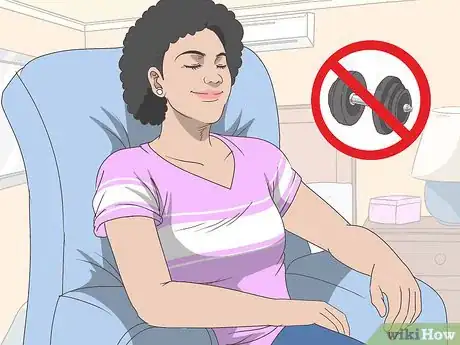


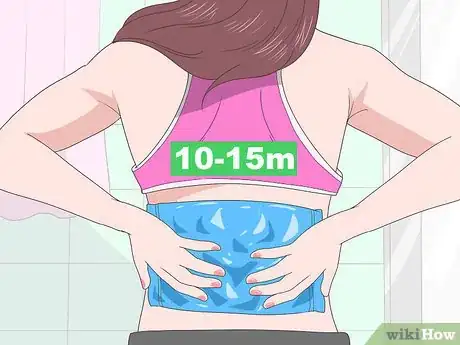

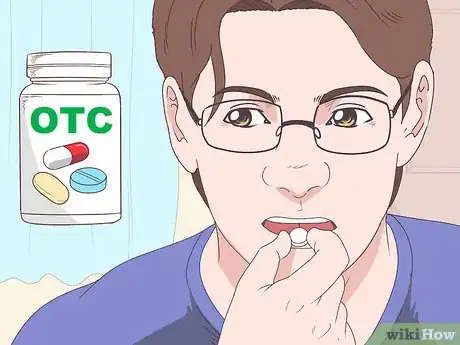
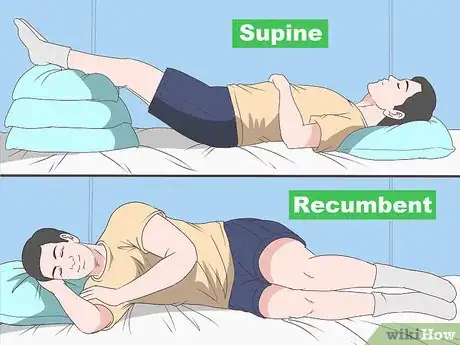
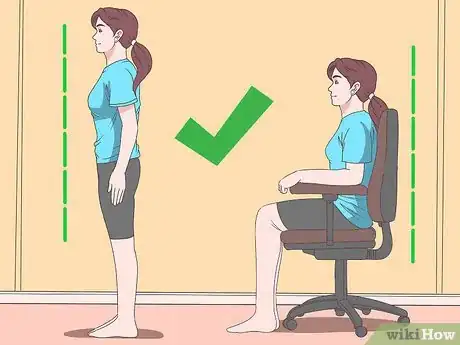
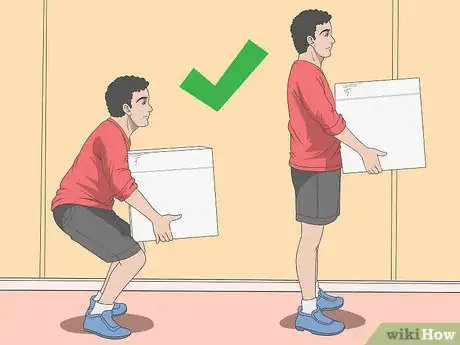
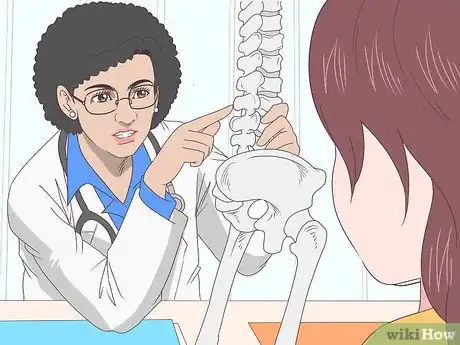
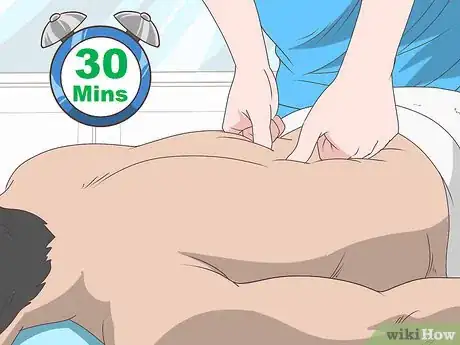
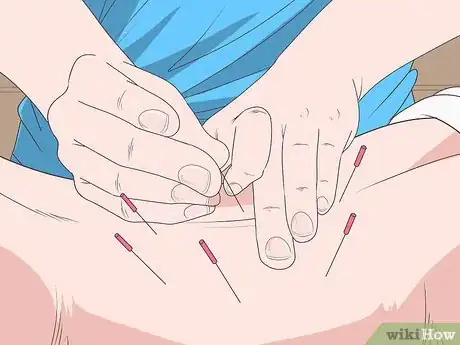
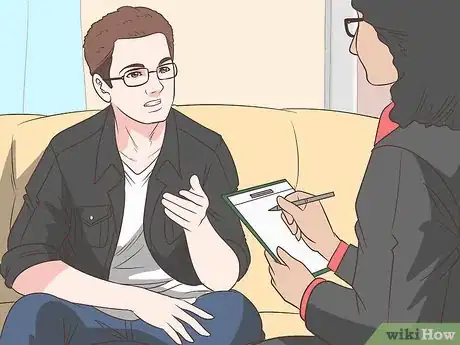
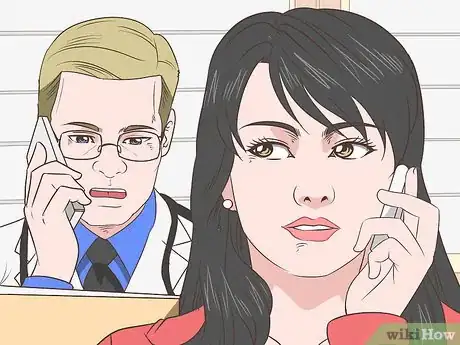
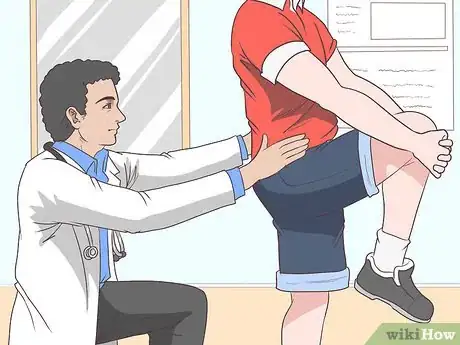

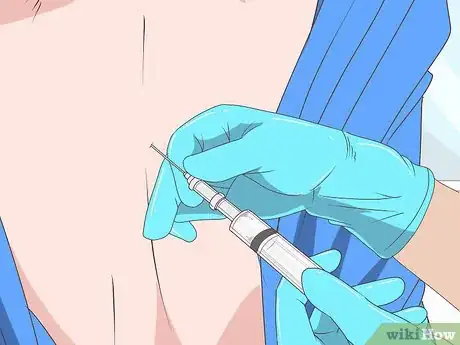

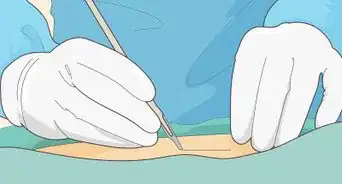
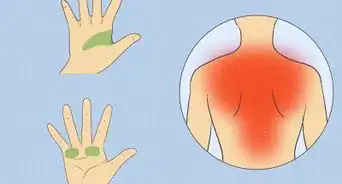
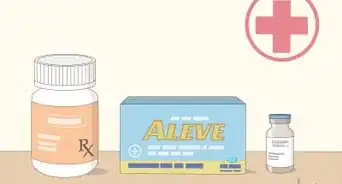
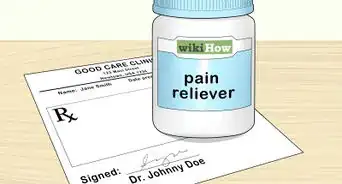
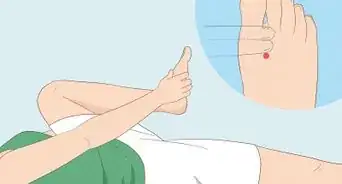
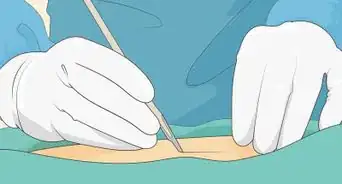
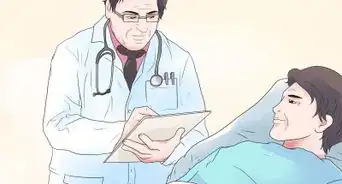
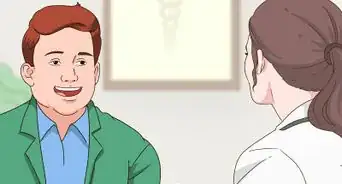
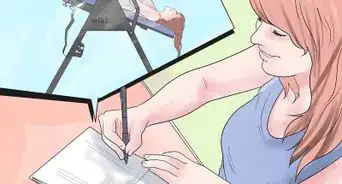
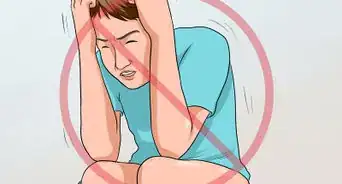
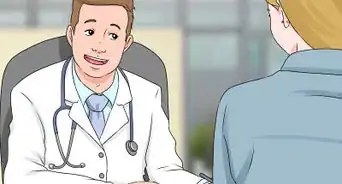
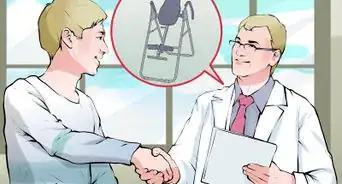
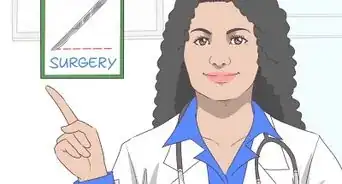








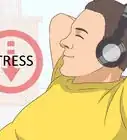
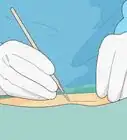
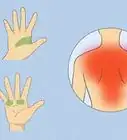
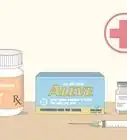



































Medical Disclaimer
The content of this article is not intended to be a substitute for professional medical advice, examination, diagnosis, or treatment. You should always contact your doctor or other qualified healthcare professional before starting, changing, or stopping any kind of health treatment.
Read More...